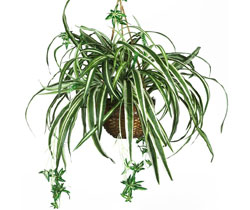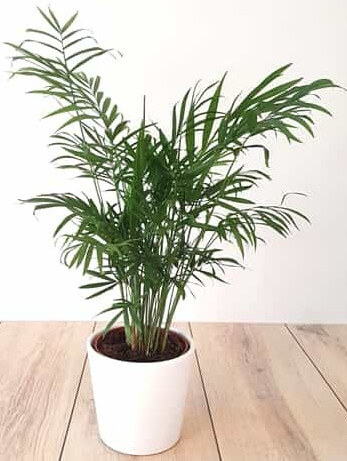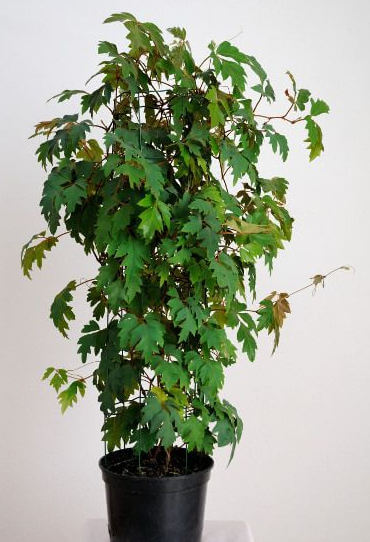It is true that the average house or basement apartment is nowhere near as light and bright as the outdoors, yet many plants can tolerate dim light, if given a helping hand. And some, like the Chinese Evergreen and the Aspidistra plant, like a shaded spot in your house just fine.
If light is hard to come by in your home, we suggest these low-light Houseplants for dim rooms, ordered by decreasing ability to withstand low-light conditions:
- Aglaonema (Chinese Evergreen)
- Aspidistra
- Asparagus setaceus
- Ferns – Lemon Button
- Maranta – Prayer Plant
- Monstera deliciosa
- Nephrolepis – Boston Fern
- Parlor Palm
- Heart-Leaf Philodendron
- Cissus rhombifolia – Grape Leaf Ivy
1. Chinese Evergreen (Aglaonema) – Poor Light
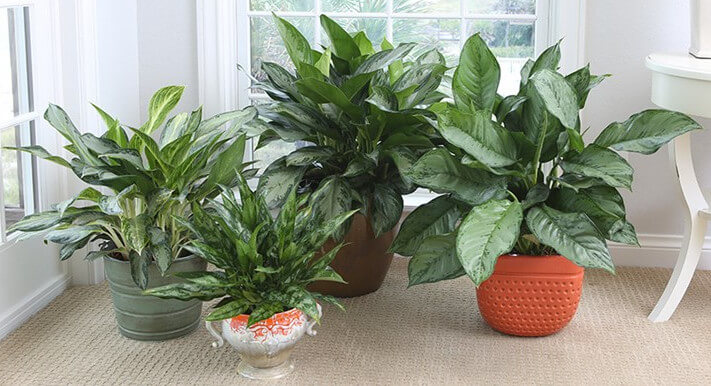
Aglaonema is a genus of perennial evergreen plants in the family Araceae, native to southeast Asia, northeast India, southern China, Malaysia, New Guinea and the Philippines.
The plants in this genus are wonderful low light houseplants, and are among the easiest to maintain. They are one of the only plants which can survive long periods of time in poorly lighted and badly ventilated areas, making them ideal for offices and interior rooms with poor or fluorescent lighting.
The darker the leaves and stalks, the less light they require. Green varieties of Aglaonema can tolerate low light, but the variegated ones will maintain their health in the shaded part of a relatively bright room with indirect sunlight.
Never place these plants in direct sunlight.
Warnings: Aglaonema is highly toxic when ingested, calcium oxalate crystals in the leaves and stems can cause severe pain and irritation of the mouth and throat. Please, keep Aglaonema away from curious pets and children at all costs, or consider another houseplant.
2. Aspidistra (Cast Iron Plant) – Poor Light
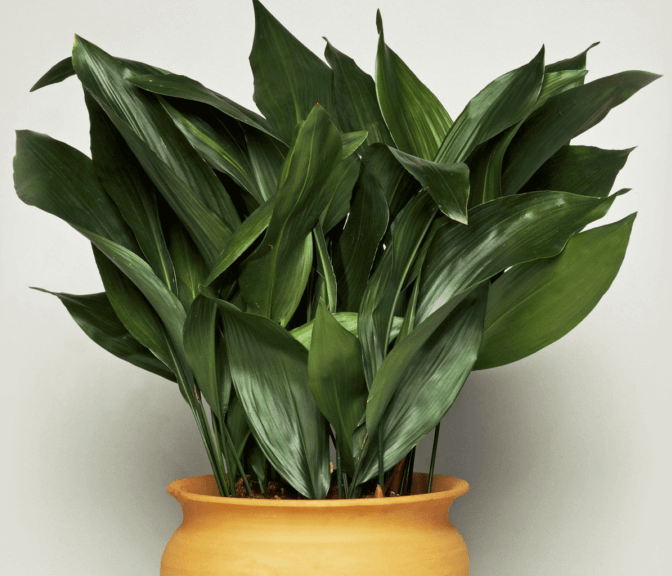
Aspidistra is a popular foliage house plant, once popular in Victorian homes because the plant can tolerate what are unfavorable growing conditions for most other house plants.
The Aspidistra plant handily accepts if it must exist in poor light, murky conditions, as well as in poor air quality, or warm or cold temperatures.
Despite their high tolerance of poor conditions, Aspidistra plants thrive under proper conditions so please do not neglect them just because you can. Your Aspidistra will flourish and look more attractive with proper care.
It is nicknamed the Cast Iron Plant for its near indestructibility, and makes an ideal housewarming gift for college-age irresponsible people. If you leave the plant in a dimly lit room and mostly forget about it except for watering it, it will maintain its size for years to come.
The disadvantage of growing so slowly means it takes a long time for this plant to reach a saleable size, therefore an Aspidistra plant can be very expensive to buy. On the upside, they can survive with little care for many (50+) years.
3. Asparagus Fern (setaceus) – Indirect Light
Asparagus ferns have a low sun requirement. While they do tolerate full sun, if exposed for too long, their leaves will yellow. These plants perform better with indirect morning sun and afternoon shade, or even light shade.
The best location for an Asparagus plumosa Fern is in a shaded corner of a bright room. If you have a north-facing window, the plumosa will be happy sitting near that. East-facing windows are also suitable, as the plants receive morning sunshine but not full midday sun.

Tolerant of heat: Unlike other ferns, because it isn’t a fern, the Asparagus Fern can tolerate high temperatures and will grow well throughout the high heat of the summer.
Warnings: Don’t eat the red berries of the Asparagus Fern, they can cause digestive problems.
4. Ferns – Lemon Button Fern – Filtered Light
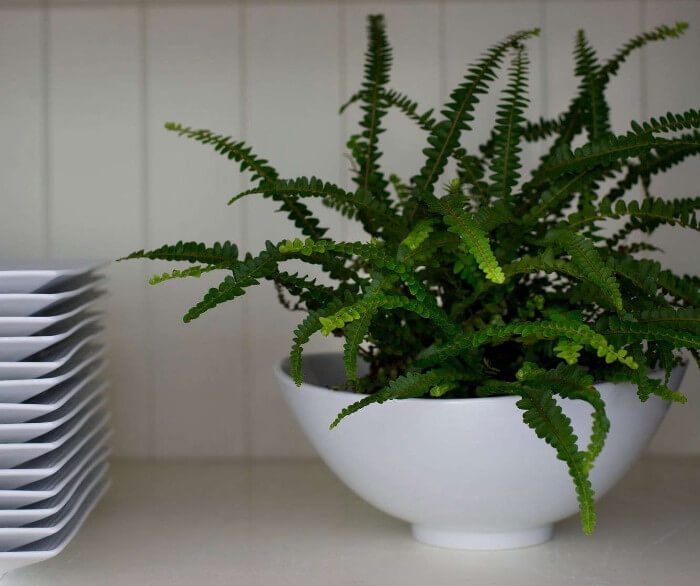
Most ferns prefer shaded, damp soils, and the lemon button fern is no different. The lemon button fern’s light requirements are modest, as this plant will enjoy a spot where it receives filtered light as though planted in a protective forest.
Set this fern in partially shaded north or west window, and keep away from cold or hot drafts, and it will be happy.
5. Maranta – Indirect, Bright Light

The Maranta genus includes a few dozen low-growing plants native to Brazil, and one of these popular house plants is the beautifully presented Prayer Plant.
The Prayer Plant’s light requirements are easy to meet: it is happy in indirect yet bright light for most of the year, and does well under growing lights. Direct sunlight and heat can scorch the leaves of the prayer plant.
It is generally tolerant of lower light areas, as long as there is good air flow without any cold drafts (60-80F temperatures, aka indoor room temperatures, are just fine for this plant).
6. Monstera – Indirect, Bright Light
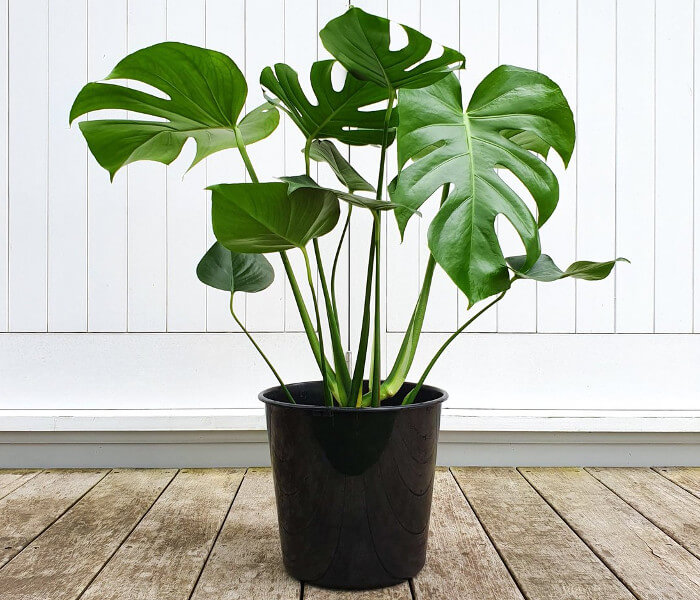
The Monstera deliciosa, or “Swiss Cheese Plant” (so named for the swiss cheese appearance of gaps in its foliage), is a vining plant that does not need a lot of light. But the more light it gets, the greater the size of its leaves and vining extensions.
It will handle many types of indoor lighting conditions except for prolonged periods in direct, bright sunlight. This plant is originally found on the bottom of the forest, thus it does not require a great deal of light to thrive.
7. Boston Fern – Nephrolepis exaltata ‘Bostoniensis’
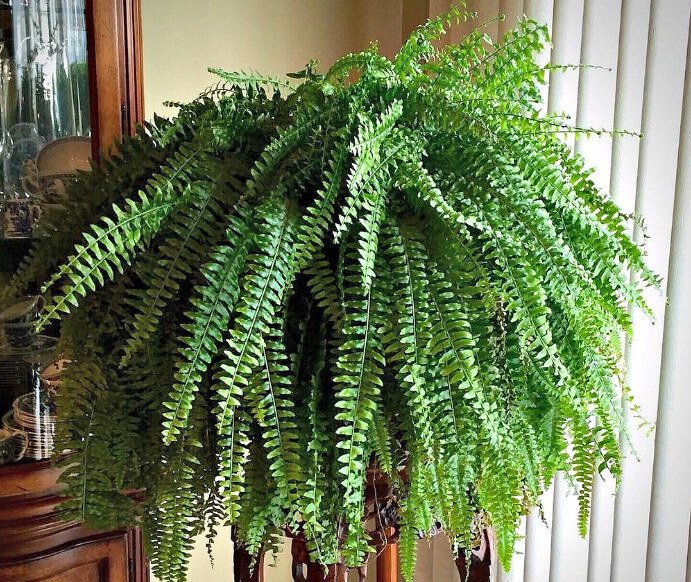
You’ll notice many ferns are on this list: Ferns prefer humid, damp soils as a general rule, and are used to filtered, indirect bright light. Accordingly, choose a spot in your house that has reasonable light levels — a north-facing window would be ideal for the Boston Fern.
8. Parlor Palm – Indirect Light
Parlor palm house plants like a little bit of light, and will do best by a window that receives some early morning or late afternoon light.
Lighting requirements for the Parlor palm: prefers low light and might suffer in direct sunlight, so do not worry if your space for this plant is not near your brightest windows.
Prefers bright, indirect light, but will thrive well in medium to low light.
9. Heart-Leaf Philodendron
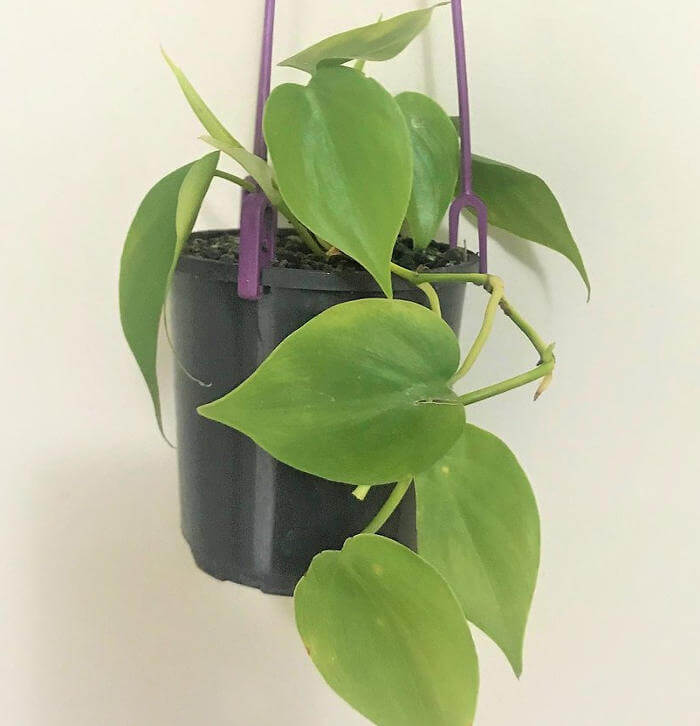
Again, Philodendrons do quite well in low light conditions, and if they are in a room with a window, as long as they are not placed in direct sunlight, they will be happy. This low-light requirement is one of the best aspects of the heart-leaf philodendron‘s versatility.
Like the Monstera, plants that receive medium or indirect light will grow faster and produce more leaves than those kept in the shade.
Philodendrons should not be placed in direct sunlight.
10. Cissus rhombifolia – Grape Leaf Ivy
Grape Ivy plants prefer bright, filtered light without being subjected to too much complete shade. Related varieties such as ‘Ellen Danica’ and ‘Mandianna’ can tolerate lower light.
An easy way to tell if your Grape Leaf Ivy is receiving adequate light: If the stems stretch toward the light and new leaves are further apart on the stem, move your plant to a brighter location.
When deciding where to place your Cissus, remember that a bright yet indirect light exposure is most advantageous, though the plants can tolerate bright to moderate light if kept sufficiently moist.
How to Know If Your Plant Can Handle A Dimly Lit Space
If you are trying to choose the right house plant for a darker spot in your home, the rule of thumb is: the darker and thicker the leaves are, the more the the plant can withstand poor lighting.
How Long Can House Plants Survive Without Light?
How long your house plants will survive in no light at all depends on how actively they are growing and on the type of plant.
A plant with thick, waxy leaves or a dormant succulent that has not been watered for sixty days probably won’t be affected at all by sitting for a week or two in the dark. A fast-growing plant entering its flowering stage is a very different situation, however.
A Little Light or None at All?
If you store your dormant plants for a short period, it might be best to keep them in a light-sealed room. A small amount of light may be worse than none at all, since the plant could begin to make etiolated growth and lean in the direction of whatever little light they sense.
You may furnish a dark space with light-loving plants if you keep them there only a short time, then move them into a brighter space for a few hours of sunlight, or outside.
Water VS Light
In general, the less light your plant has, the less water it needs.
